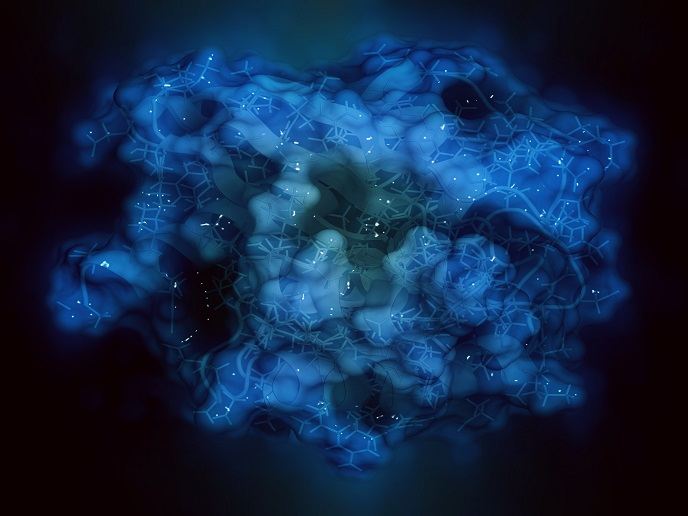Overcoming KRAS-driven lung cancer resistance to drugs
Lung adenocarcinoma is the most common type of lung cancer and approximately one quarter of patients harbour activating mutations in the KRAS gene. Unfortunately, despite recent studies identifying specific KRASG12C inhibitors, oncogenic KRAS is not a druggable target.
Strategic roadblocks along the pathway to cancer from KRAS
The development of resistance hampers the efficacy of therapy. Along the KRAS effector pathway, there are several proteins that therapies can target for inhibition using so-called small molecules to restrict their action. As the development of RAF and MEK inhibitors has progressed, feedback loops have emerged that reactivate the other route, the ERK cascade, and induce resistance to treatment. Associate research director at the Oncogene Biology laboratory Julian Downward(opens in new window) outlines: “Our project was to evaluate the therapeutic potential of blocking RAS interaction with cRAF (one of the 3 RAF kinases) in mutant KRAS-driven lung adenocarcinoma.” To achieve that goal, the researchers engineered a new mouse model carrying a mutation in the Ras-Binding domain of cRAF that suppresses its interaction with RAS. The mouse model revealed an unexpected function for cRAF interaction with RAS. “We were very pleased when we realised this mouse model is embryonic lethal,” Downward explains. “Our cRAF mouse model is the only one to date able to recapitulate or recreate that phenotype so we can conclude that cRAF interaction with RAS is absolutely necessary for embryonic development.”
Solving two problems at the same time
As post-doc Marie Skłodowska-Curie fellow Romain Baer explains, the research design is very ingenious: “Using a so-called dual inducible in vivo recombination system, researchers can first trigger tumour formation. Then, they are able to specifically express the mutant either in the tumour compartment only, or in the whole body.” The first model enables the researchers to explore the cell autonomous role of cRAF interaction with RAS. At the same time, the full body expression of the mutant allows assessment of both the therapeutic potential of this new drug target together with any potential toxicities, thus mimicking what would happen during a drug treatment. Making the results even more meaningful, IVORIaN scientists also used CRISPR/Cas9 technology to engineer lung tumour cell lines carrying endogenous cRAF mutations to study the mechanism underlying RAS/cRAF interaction disruption. Use of endogenous knock-ins eliminates the need to overexpress systems that often create artefacts in experiments as a result of the investigation procedure. “Generating knock-ins was extremely challenging, but the core facilities at the Francis Crick Institute (Sequencing Facility, Genetically Engineered Mouse Models etc) have been key to help us set up an efficient pipeline,” emphasises Baer. The team are still working on deciphering the mechanism of the multifunctional cRAF action. Once the mechanisms are elucidated, they will be confirmed in vivo with a few more experiments. For collaboration, the translation team at the Francis Crick Institute will help to reach out to big pharmaceutical companies to find new inhibitors able to block RAS/cRAF interaction. “Hopefully, this will lead to a new anti-cancer drug for KRAS-driven cancer patients. We still have a lot of work ahead of us before we will be ready to reach the patient’s bedside!” Downward concludes.







